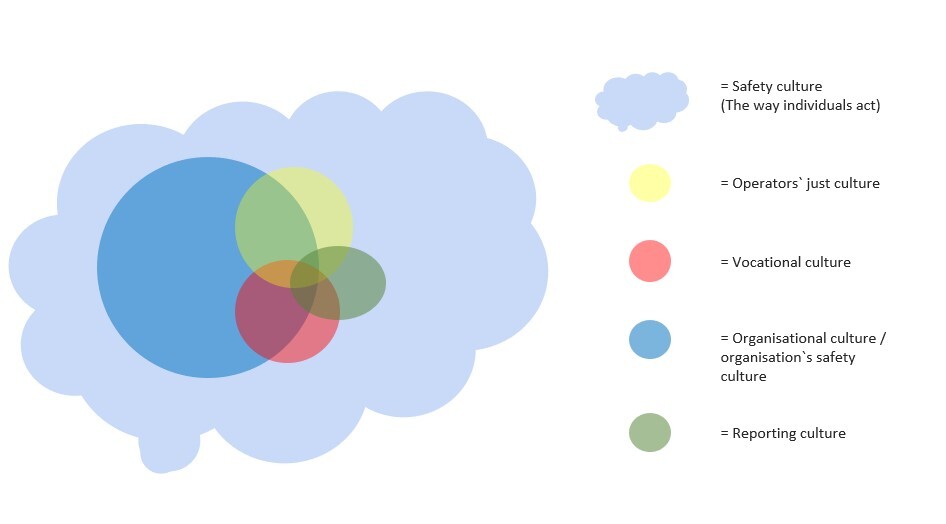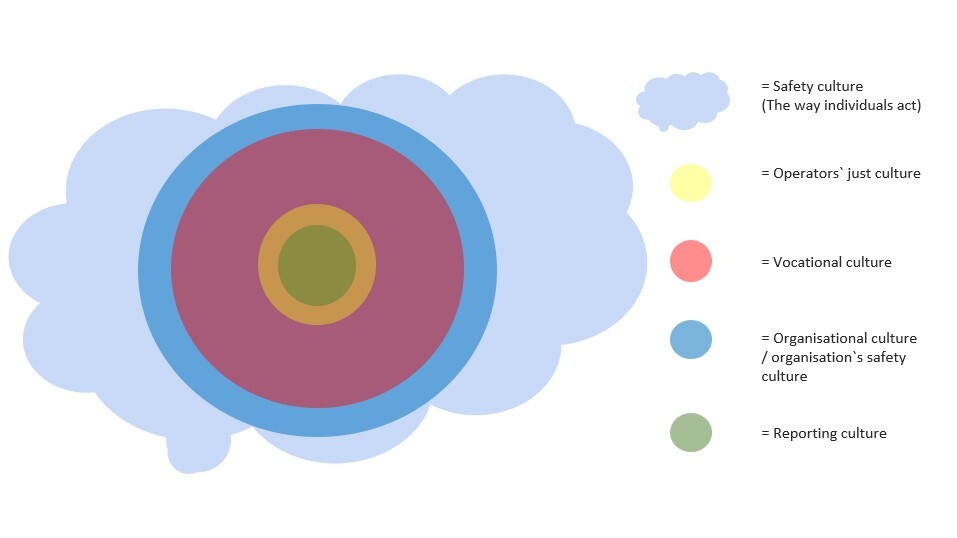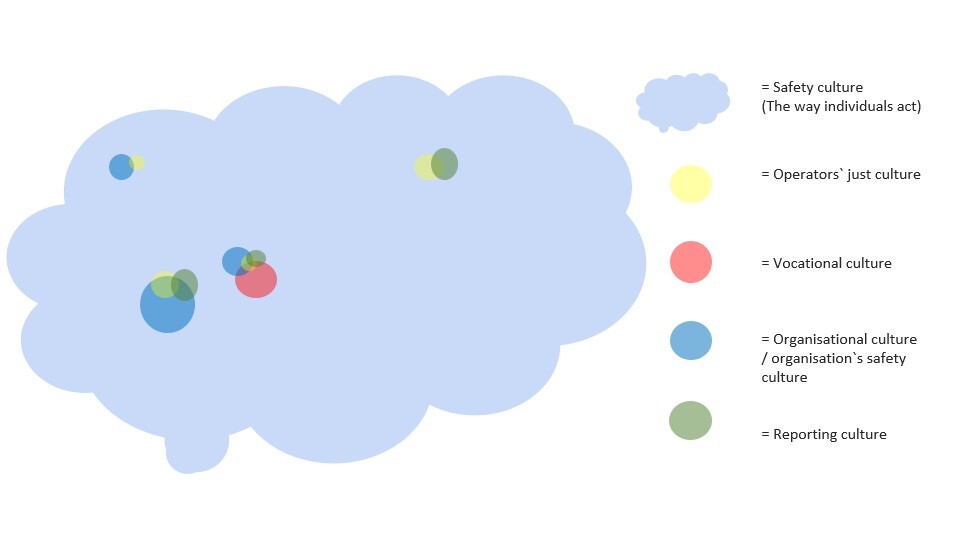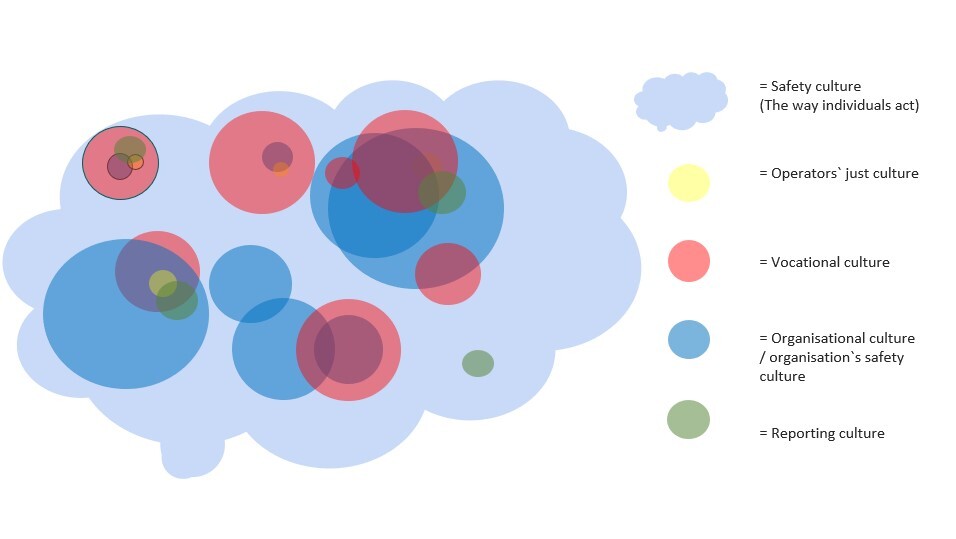Understanding of cultural relationships – basis for building safe operations

This page contains information about inter-cultural relationships. They vary significantly depending on the profession and organisation. Here, you can find examples of how cultural elements can overlap and vary in different organisations. The overlapping elements are safety culture, just culture, vocational culture, organisational culture and reporting culture.
The organisations in the examples are fictional and do not depict the situation of a specific organisation. Organisations are responsible for the safety of their operations. By acknowledging the strengths and potential challenges of the organisation structure, an organisation has better chances to influence its safety culture, i.e. how the organisation operates in practice.
Examples of safety culture in practice – state aviation operators

The example above depicts the theoretical implementation of safety culture in a state aviation organisation. The grounds are:
- A very precise selection process
- Safety culture is “built” by the operator
- Uniform cultural (national) backgrounds
- Only one operator influencing the cultural evolution
Examples of safety culture in practice – a new, international company

The example above depicts the theoretical implementation of safety culture in a situation where a new, international company operating in multiple countries is established. The grounds are:
- The selection process does not emphasise attitude towards safety in a uniform manner
- Safety culture is “built” on different experiences
- Non-uniform cultural (national) backgrounds
- Often multiple employers over the employees`s career influencing the cultural evolution
Examples of safety culture in practice – company that chains its services

The example above depicts the theoretical implementation of safety culture in a company that chains its services. The grounds are:
- A wide variety of cultural elements
- Safety culture is “built” on several different experiences
- Non-uniform cultural (national) backgrounds
- Often multiple employers over the employees`s career influencing the cultural evolution
- The management of chained operators is very challenging